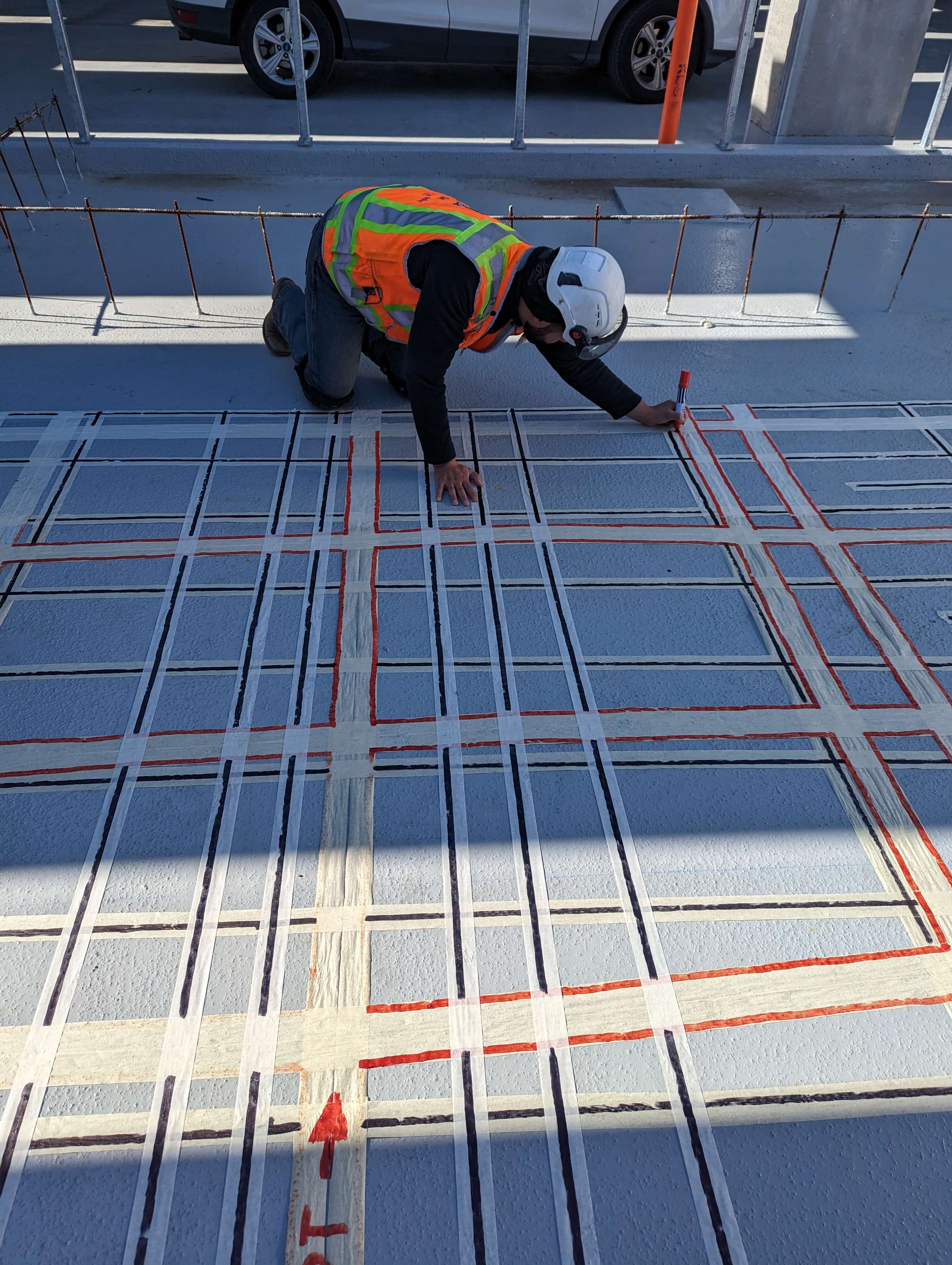Introduce the Transformative Power of Concrete Scanning in Optimizing Effectiveness and Security
Concrete scanning has actually become a vital tool in the building industry, using exceptional benefits in enhancing project efficiency and ensuring safety and security criteria. By utilizing sophisticated technology, concrete scanning allows experts to see past the surface, discovering surprise intricacies that could affect the structural honesty of a structure. The transformative power of concrete scanning hinges on its ability to supply in-depth insights and real-time data, revolutionizing exactly how jobs are intended and performed. As we explore the complexities of this cutting-edge strategy, a world of opportunities opens, showcasing a brand-new era of building methods that focus on accuracy and safety and security.
Significance of Concrete Scanning
Making sure the structural honesty and safety and security of building and construction projects starts with the vital step of performing extensive concrete scanning. Concrete scanning is a non-destructive approach utilized to spot and map subsurface components within concrete structures. This procedure is crucial in identifying prospective threats, such as rebar, post-tension cable televisions, and avenues, that may be concealed within the concrete. By making use of innovative modern technologies like ground-penetrating radar (GPR) and electro-magnetic induction, building teams can properly locate these aspects without triggering any kind of damages to the framework.
The importance of concrete scanning can not be overemphasized, as it plays a crucial role in protecting against crashes, minimizing project delays, and making sure the long-term durability of the building. By recognizing prospective risks prior to the construction phase starts, home builders can implement proper precaution and make informed choices pertaining to the style and implementation of the project. Additionally, concrete scanning assists in optimizing task timelines and budget by avoiding unexpected prices and delays that might arise because of unpredicted blockages within the concrete. Eventually, spending in complete concrete scanning is an aggressive technique that boosts both effectiveness and safety and security in building and construction tasks.
Exactly How Concrete Scanning Functions
Concrete scanning operates as a crucial device in building and construction tasks by utilizing advanced innovations to detect and map subsurface components without causing structural damage. Ground Passing Through Radar (GPR) and Electromagnetic Induction (EMI) are two key techniques made use of in concrete scanning.
Throughout the scanning process, the information accumulated is evaluated in real-time, enabling prompt recognition of potential risks or challenges under the surface. By using these innovative technologies, concrete scanning dramatically reduces the risk of pricey problems and injuries on building and construction sites.
Advantages of Concrete Scanning
Using sophisticated scanning innovations in construction jobs offers a plethora of benefits, enhancing both effectiveness and safety on-site. One of the primary advantages of concrete scanning is the ability to discover and situate embedded objects such as rebar, post-tension cords, and avenues properly. By recognizing these components before boring or cutting right into concrete frameworks, the risk of unintentional strikes is substantially minimized, preventing potential injuries to workers and damage to the structure itself. Concrete scanning aids in planning and making much more effectively, as it supplies accurate info regarding the area and depth of structural elements.

Case Studies: Concrete Scanning Success

In one more instance, a building firm utilized 3D concrete scanning to examine the problem old concrete frameworks in a historic structure. The in-depth scans provided useful insights into the level of deterioration and assisted focus on maintenance initiatives successfully. By proactively addressing areas of concern determined through scanning, the business was able to prolong the lifespan of the structure and make sure owner safety and security.
These study underscore the transformative power of concrete scanning in enhancing efficiency, precision, and security in construction tasks.
Carrying Out Concrete Scanning in Projects
Applying innovative scanning technologies during construction tasks has actually become significantly vital for enhancing precision and security. By integrating concrete scanning into job planning and implementation, building and construction groups can identify potential dangers, such as More hints rebar or post-tension cable televisions, concealed within concrete structures. This aggressive approach minimizes the risk of crashes, delays, and costly rework, eventually causing more effective task timelines and spending plans.
To carry out concrete scanning efficiently, job managers should team up very closely with experienced scanning specialists to establish one of the most ideal scanning strategies for the details task requirements. Engaging scanning experts from the very early stages of a job makes it possible for the group to produce comprehensive scanning plans that resolve vital locations of worry and guarantee complete data collection.
Additionally, including concrete scanning right into normal project workflows can streamline decision-making processes, as real-time scan information supplies immediate insights right into the condition of concrete structures - Concrete Scanning. This data-driven technique promotes informed problem-solving and makes it possible for groups to make adjustments quickly, promoting a culture of effectiveness and security throughout the job lifecycle

Verdict
To conclude, concrete scanning plays a critical role in boosting efficiency and security in construction projects. By utilizing sophisticated modern technology to identify and map out underlying frameworks within concrete, this process helps to prevent costly mistakes, make certain structural honesty, and minimize threats on site. With the capacity to uncover covert aspects and supply precise data, concrete scanning find out proves to be a valuable device for enhancing project end results and making the most of overall success.
Concrete scanning is a non-destructive approach used to identify and map subsurface elements within concrete frameworks. Furthermore, concrete scanning assists in enhancing task timelines and spending plan by preventing unforeseen costs and hold-ups that might arise due to unexpected obstructions within the concrete. One notable case study involves a large-scale remodelling job where concrete scanning played a crucial role in making certain project success.In one more case, a building and construction business made use of 3D concrete scanning to assess the problem of aging concrete structures in a historical structure. By incorporating concrete scanning right into project preparation and implementation, building more info here teams can recognize possible threats, such as rebar or post-tension cables, hidden within concrete structures.